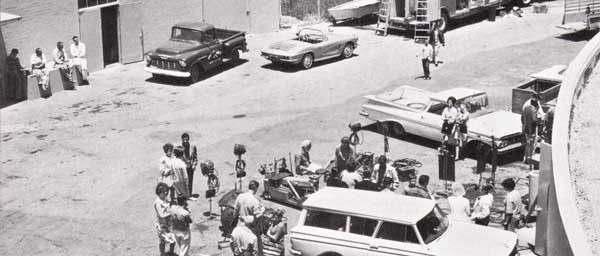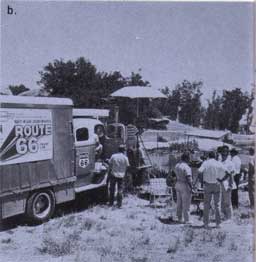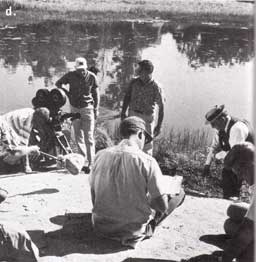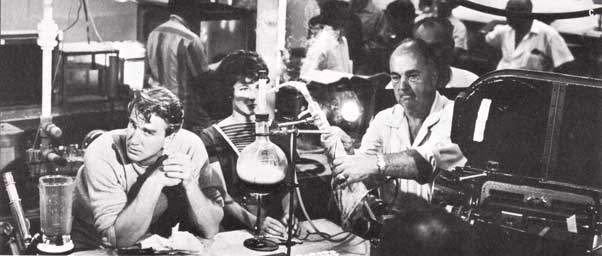
Route 66 shows viewers the country as it exists today. "Our episodes have almost no plot," he admits. "The stories are about the people who make this country great, and about two young men who are searching for identity and meaning. They show the country we live in - parts of it that most people would never have an opportunity to see." By the very nature of the way it is produced, Route 66 shows a town from the inside. How the people live. How they talk. "No other show in television does this," says Silliphant. "We even use people from the area we're filming for minor parts and as extras.
"In most instances we fall short of what we would like to do. But we are committed, not necessarily to making people think but to making them feel. It's a gamble." The fact that the gamble is paying off is reflected in the fact that the show has become one of the most popular in television.

Behind the scenes are the men and equipment which make such a show possible. Of primary importance is a crew which is both highly capable and able to work together. When you're on the road, and constantly fighting a tight schedule, unnecessary friction can't be tolerated. Sam Manners, the show's executive in charge of production, has done a remarkable job of assembling some of the most able people in Hollywood in their respective fields, while at the same time maintaining a smoothly running crew. In an operation as demanding as that of Route 66, mutual respect becomes a strong factor in keeping the peace.
Everything needed to sustain this rolling studio for weeks on end is housed in its four huge vans. One carries a complete wardrobe for the cast, including duplicate changes of clothes. It also contains dressing rooms with make-up facilities, lavatories and running water. A special tank holds 500 gallons of water.

Another truck houses all the camera, sound and electrical lighting equipment. The crew calls it the "Goose." Forward of its front bumper is a hydraulically operated camera platform that can lift a camera and several men to a height of some 20 feet above the ground. Since virtually all sound is recorded on location, three complete sound channels are carried at all times. Two of them are portable and can be installed in moving vehicles, aboard ship or wherever the action is. Close to 600 pounds of 12-volt batteries, including spares, are carried to power the electrical equipment. To aid the communications of their highly mobile operation, Route 66 recently purchased eight Citizens Band short wave radios, which are currently being installed.
A third truck contains a complete prop department. Its boss, a genial special effects genius by the name of Ira Anderson, can produce about anything the script calls for, and most of it at a moment's notice. He is financially independent. Works because he likes it, and his work shows it. Some of his feats are legend among the Route 66 crew.
In Grant's Pass, Oregon, the story called for a truck to go over a cliff, bounce 800 feet down the embankment, hit a particular boulder at the bottom, which would throw open the doors allowing a dummy to fly out and stop short of the river. It took some figuring, but an unbelieving crew watched the stunt work to perfection - the boulder, the doors, the dummy, the stop where one more bounce would have put the truck in the water. A man who likes his work collected a few bets that day.

(a) On location at Marineland. The prop van and one of the show's Corvettes are in the background.
(b) The "Goose" in action. Umbrella shades camera on partially raised platform from sun glare.
(c) Special effects man, Ira Anderson, making the pot boil on schedule. (d) Cloth-swathed mike on
pole helps sound man pick up dialogue in open location.
See the original page 26 here...





